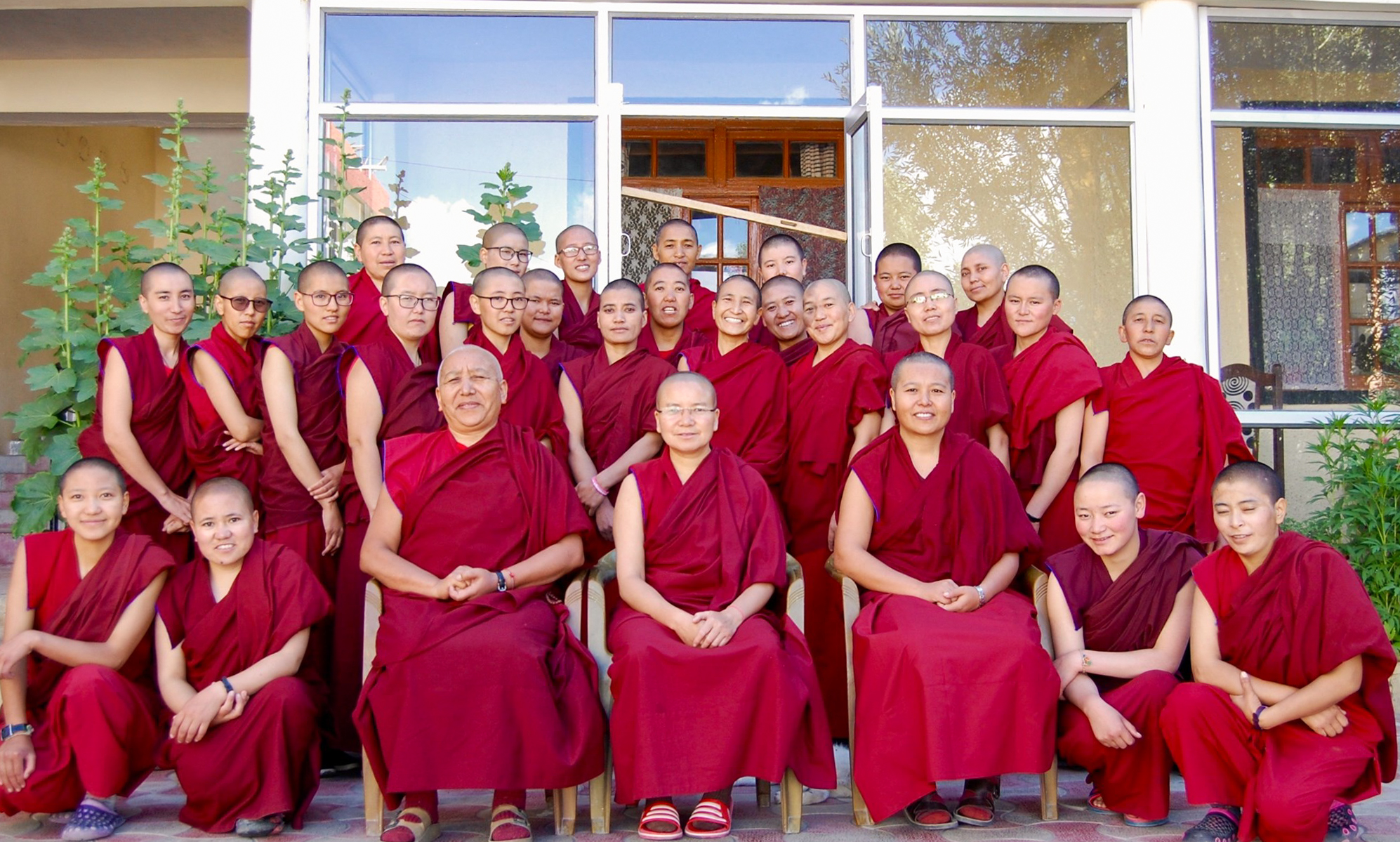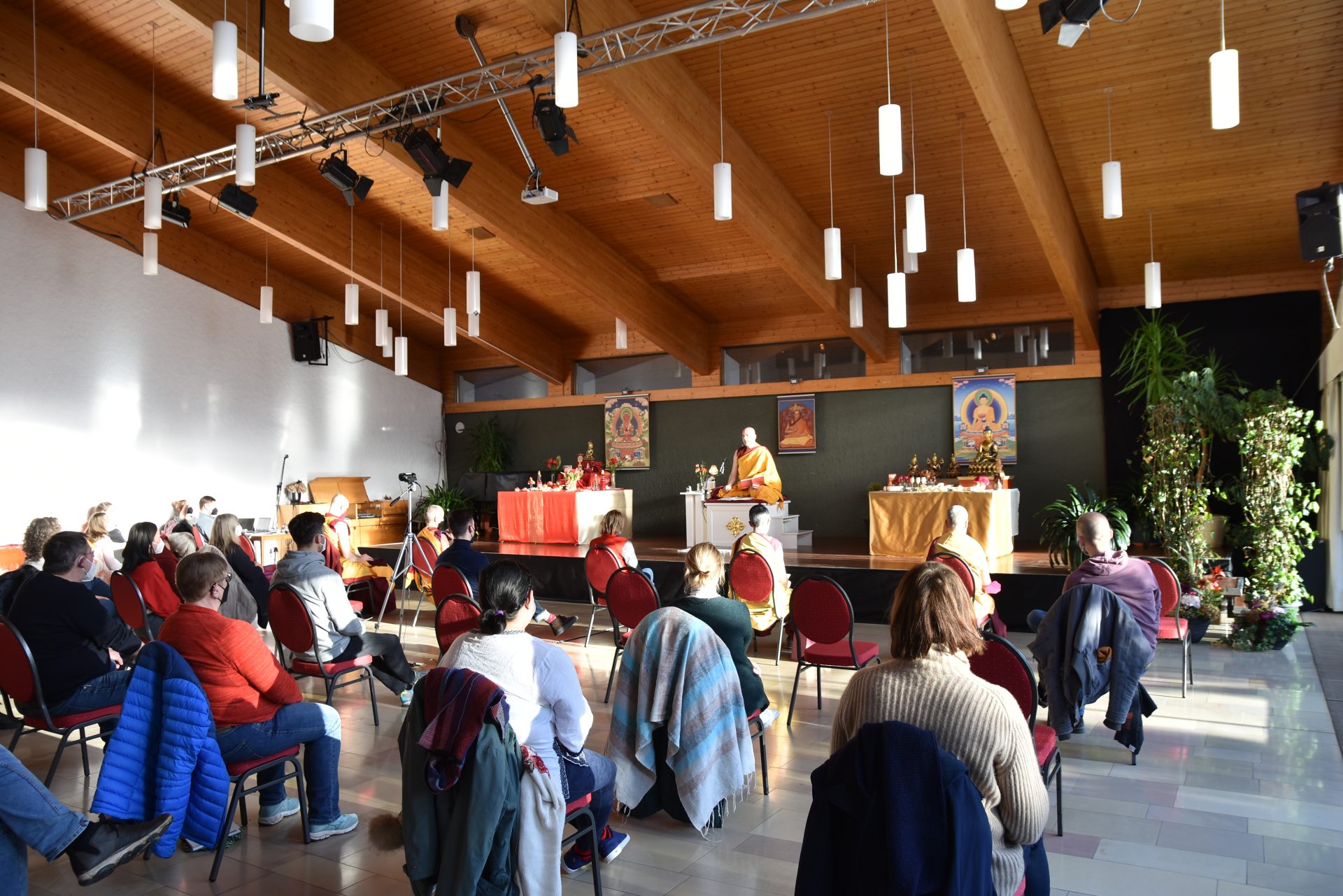Brahman: Definition, Meaning, and Philosophy
At the core of yogic philosophy lies the concept of Brahman—the ultimate reality and the source of all existence. The transcendent goal of yoga is to experience the oneness of Brahman—the ultimate reality, the absolute and eternal truth that...

At the core of yogic philosophy lies the concept of Brahman—the ultimate reality and the source of all existence. The transcendent goal of yoga is to experience the oneness of Brahman—the ultimate reality, the absolute and eternal truth that underlies the universe and all of existence. Exploring the multifaceted meaning of Brahman provides an opportunity to delve into the deep philosophical and spiritual aspects of yoga, contemplate the mysteries of the universe, deepen your spiritual practice, and connect with something greater than yourself.
What is Brahman?
In Indian philosophy, Brahman is the ultimate reality, the supreme, unchanging, and eternal essence of the universe. The term “Brahman” is derived from Sanskrit, meaning “to swell, expand, grow, enlarge.” Brahman is beyond human comprehension as it is beyond the limitations of time, space, and individual identity. It is considered to be the absolute, formless, and all-pervading cosmic power that is the source and sustainer of all existence. It is described as the essence of truth, consciousness, and bliss that remains unchanged, yet serves as the cause of all changes in existence.
As the supreme reality, it is recognized as the source of all existence in the entire universe. The unchanging, infinite, immanent, and transcendent reality forms the divine ground of all matter, energy, time, space, being, and everything beyond your experience. It is the origin and the end of all things, the very fabric of reality, and the fundamental principle that sustains the cosmos. Every entity and phenomenon in the universe, whether material or spiritual, emanates from this Brahman, exists within it, and ultimately merges into it.
In the Chandogya Upanishad, one of the oldest yogic texts, uses the metaphor of a clay pot to explain the concept of Brahman. Just as clay is used to make many different types, forms and shapes of pots, Brahman is the substrate that manifests in various forms and shapes in the universe. The clay (Brahman) remains constant and unchanging, while the pots (the various forms in the universe) are impermanent and transient.
Nirguna Brahman and Saguna Brahman
Brahman can be conceptualized in two different ways. Nirguna Brahman refers to the formless, attribute less aspect of Brahman, while Saguna Brahman refers to the aspect of Brahman that is imbued with qualities and attributes.
Nirguna Brahman is often associated with the concept of Advaita Vedanta, a philosophical school that emphasizes the non-dual nature of reality, asserting that Brahman is the only true reality and that all distinctions are ultimately illusory. It is pure consciousness, beyond the realm of dualities such as good and bad, right and wrong.
Saguna Brahman is the personal aspect of the supreme cosmic principle that manifests in the world with attributes and qualities. It is often associated with the concept of Bhakti Yoga, a spiritual path that emphasizes devotion to a personal deity or form of the divine. In this aspect, Brahman is seen as taking on various forms and qualities in order to interact with devotees on a more personal level. While Saguna Brahman includes attributes and is perceivable by human senses, it should not be mistaken for a deity in the traditional sense. Instead, it represents a human conception of the Infinite, a way for the human mind to comprehend the incomprehensible.
Both Nirguna and Saguna Brahman are considered valid conceptualizations of the supreme cosmic principle within Indian philosophy, with different schools of thought emphasizing one aspect over the other. The ultimate goal of understanding Brahman is to realize its true nature, which transcends all dualities and distinctions. By contemplating both the formless, attribute less nature of Nirguna Brahman and the personal, manifest aspect of Saguna Brahman, individuals can deepen their understanding of the divine and its role in the universe.
The Connection Between Atman and Brahman
The Atman-Brahman relationship is one of the fundamental tenets of yogic philosophy. Atman, interpreted as the individual soul or self, is seen as the microcosmic reflection of Brahman. According to Vedanta philosophy, Atman is not separate from Brahman, but an extension or manifestation of it. The individual self, or Atman, is often described using the analogy of a drop of water from the ocean – distinct in its individuality yet inherently connected to the vast expanse of the ocean itself.
Advaita Vedanta posits that Atman and Brahman are identical – the personal and universal selves are the same. This non-dualistic perspective, encapsulated in the Mahavakya (great saying) “Tat Tvam Asi” (That Thou Art), suggests that the individual soul is not separate from the Absolute Reality. Instead, it is Brahman itself, cloaked by ignorance or Maya. Realizing this profound oneness, transcending the illusion of duality, leads to Moksha or liberation, an essential goal in the path of yoga.
This non-dualistic concept is eloquently captured in the profound Vedic statement “Aham Brahmasmi,” meaning “I am Brahman.” The individual soul is seen as a microcosmic reflection of the macrocosmic absolute, suggesting that your true identity is not the transient physical form but the eternal, unchanging Brahman. This realization paves the way to liberation and union with the divine.
Brahman as Sat-cit-ananda (truth-consciousness-bliss)
While Nirguna Brahman is attribute less, it is often described using the attributes Sat (Truth), Chit (Consciousness), and Ananda (Bliss). Sat represents the aspect of Brahman that underlies all existence, the eternal and unchanging reality that transcends the temporal and illusory nature of the world. Cit signifies the pure consciousness that pervades all beings and is the source of all awareness and intelligence. Ananda points to the intrinsic joy and bliss that is inherent in the realization of Brahman, the ultimate goal of spiritual seekers.
These are not attributes in the conventional sense, but pointers to the indescribable nature of the Absolute Reality. Understanding these three attributes helps seekers comprehend the essence of Brahman and its implications for individual spiritual growth and enlightenment. By meditating on these attributes, practitioners aim to transcend the illusion of the material world and experience the ultimate reality of Brahman.
Brahman hidden by Maya (Illusion)
Maya is the cosmic illusion or veil that obscures the true nature of Brahman, causing individuals to become attached to the material world and ignorant of their true spiritual nature. This illusion fosters the misconception of duality, making you believe that you are separate entities existing independently in the physical universe. This false perception, akin to confusing a rope for a snake, results from spiritual ignorance (Avidya).
To overcome Maya and Avidya and realize the true nature of Brahman, one must cultivate self-awareness, spiritual knowledge, and detachment from the transient aspects of existence. By transcending the limitations of the ego and recognizing the unity of all creation, one can experience the divine essence of Brahman within themselves and in all beings. This realization brings liberation (moksha) from the cycle of samsara and leads to ultimate enlightenment and union with Brahman.
Moksha: Liberation from Samsara
Moksha signifies the Atman’s liberation from the cycle of Samsara and the realization of its oneness with Brahman. It is the ultimate goal of yoga, the state of absolute bliss and peace. Moksha is attained when the individual soul sheds its illusion of separateness, incited by Maya, and realizes its true nature, Brahman. This realization is not intellectual but experiential, a state of being where one experiences the truth of the Mahavakya, “Aham Brahmasmi,” meaning “I am Brahman.” Upon achieving Moksha, the individual soul merges with the supreme reality, Brahman, marking the end of the cycle of birth and rebirth. The soul, free from all limitations, resides in eternal bliss and peace.
Yoga practices to experience the oneness of Brahman
To experience the oneness of Brahman, one can engage in various yoga practices that help in transcending the limitations of the individual self and connecting with the universal consciousness. Through these practices, one can quiet the mind, purify the body, and cultivate a deeper awareness of the true nature of reality. Through dedicated practice and devotion, one can awaken the divine spark within and realize their true nature as a manifestation of Brahman. Choose a path that resonates with your inner being and commit yourself fully to the journey of self-discovery and spiritual growth.
Jnana Yoga
One of the oldest and most revered paths of yoga is Jnana Yoga, also known as the path of knowledge. Jnana Yoga emphasizes the pursuit of wisdom and understanding as a means to attain enlightenment and realize the ultimate truth of existence. This path involves deep introspection, self-inquiry, and the study of sacred texts and scriptures.
Through the study of sacred texts, such as the Upanishads, individuals gain knowledge and insight into the oneness of Brahman. This path encourages seekers to question their existence and to transcend the limitations of the mind in order to realize their true divine nature and have an experience of oneness.
Through contemplation, self-inquiry, introspection, and meditation, practitioners of Jnana Yoga seek to discern the difference between the eternal self, or Atman, and the temporary aspects of the human body and physical world. By cultivating discernment, knowledge, and self-realization, Jnana Yoga practitioners aim to transcend the limitations of the ego and merge with the universal consciousness, experiencing the oneness of Brahman. This path is often considered intellectually challenging, as it requires a keen intellect, an open mind, and a sincere desire for self-discovery.
The Upanishads contain the maha-vakyas or “great sayings”, which are key teachings that point towards the ultimate truth of existence and the unity of all existence. Some of the most well-known maha-vakyas include “Aham Brahmasmi” (I am Brahman), “Tat Tvam Asi” (Thou art that), and “Ayam Atma Brahma” (This self is Brahman). These profound statements serve as powerful tools for unraveling the layers of conditioning and ego that obscure the realization of the interconnectedness of all beings and the underlying unity of creation.
Bhakti Yoga
Bhakti Yoga, the path of devotion, is a profound and deeply heartfelt practice that involves cultivating a loving and intimate relationship with the divine. It is a path of surrender and devotion, wherein individuals express their love, gratitude, and reverence towards a chosen deity or higher power. Unlike other paths of yoga that primarily focus on self-realization through knowledge or physical practice, Bhakti Yoga emphasizes the power of love and devotion as a means of attaining spiritual union.
Through prayers, chanting, and devotional rituals, practitioners cultivate a deep connection with the divine and experience a sense of unity. By surrendering completely to the divine, individuals can dissolve their ego and merge with the ultimate reality.
Practitioners engage in devotional rituals, chant mantras, sing hymns, and take part in communal worship to deepen their connection with the divine. Through unwavering devotion and selfless service, Bhakti Yoga offers a transformative journey that leads to the ultimate goal of merging with the universal consciousness and experiencing the oneness of Brahman. It is a path that touches the heart and nourishes the soul, providing solace, inspiration, and a profound sense of divine love and connectedness.
Raja Yoga

Raja Yoga is considered the royal or highest path of yoga, focusing on meditation and the control of the mind to attain oneness with the supreme cosmic power. Raja Yoga teaches practitioners to still the fluctuations of the mind and achieve a state of inner peace and self-awareness through various techniques, such as concentration on the breath, visualization, and the repetition of mantras.
This path of yoga provides powerful tools for realizing the interconnectedness of all things and experiencing the oneness that lies at the heart of existence. Through regular meditation practice, individuals can gradually quiet the endless chatter of their thoughts and enter a state of profound stillness. In this state, individuals can experience profound moments of clarity and insight, leading to a deeper understanding of their true nature and the nature of reality.
By withdrawing their senses from the distractions of the external world, practitioners can turn their attention inward and connect with their true selves. Through regular meditation practice, individuals can gradually quiet the endless chatter of their thoughts and enter a state of profound stillness.
One of the key teachings of Raja Yoga is the concept of Samadhi, which refers to a state of intense concentration and spiritual absorption where the individual merges with the object of meditation. Through the dedicated practice of meditation and self-discipline, practitioners can reach a state of Samadhi and directly experience the oneness of Brahman. This profound state of unity allows individuals to transcend their limited sense of self and merge with the universal consciousness that permeates all existence.
Mantra Yoga
Mantra Yoga uses the repetition of mantras—sacred Sanskrit sounds or phrases—to quiet the chatter of the mind, focus attention, boost concentration, cultivate spiritual growth, and tune into the cosmic vibration that underlies all of creation. In Mantra Yoga, the chosen mantra is repeated either silently or aloud, allowing the practitioner to enter a state of focused meditation and awaken higher states of consciousness. By reciting powerful mantras like “Om Shanti” or “So Hum,” practitioners can transcend their limited sense of self and tap into the meaning and power of these ancient Sanskrit words. Mantras have a powerful vibrational energy that can lead to a deeper understanding and experience of the interconnectedness of all beings.
Hatha Yoga

The physical postures (asanas), breath control (pranayama), and mindfulness techniques practiced in Hatha Yoga harmonize and balance the body, heart, and mind, creating a conducive environment to transcend the limitations of the ego.
The focused concentration and mindful movement involved in Hatha Yoga help to still the mind and bring us into the present moment. The physical postures in Hatha Yoga help to release tension and blockages in the body, allowing prana (life force energy) to flow freely. This increased energy flow can lead to a greater sense of vitality and well-being, as well as a deeper connection to the divine within and around us.
By regulating the breath with pranayama breathing exercises, you can increase your prana (life force energy) and channel it throughout the body, awakening dormant energy centers known as chakras, and purify the subtle energy channels in the body. By controlling the breath, practitioners increase focus and concentration and cultivate a state of inner stillness, vitality and clarity, which allows for a deeper exploration of the self and the connection to the divine source.
Through the regular practice of Hatha Yoga, individuals can align their physical, mental, and spiritual aspects, leading to a state of balance and harmony within themselves. By directing your attention to the sensations in your body and the rhythm of your breath, your can cultivate a sense of inner peace and connection. This heightened state of awareness allows us to transcend the limitations of the ego, dissolve the illusion of separation, and experience the interconnectedness of all beings.
Karma Yoga
Karma Yoga is the path of selfless service and dharmic action. By performing actions and deeds without attachment to the results and with a sense of surrender to a higher power, practitioners of Karma Yoga aim to dissolve the ego and experience the oneness of Brahman.
In the practice of Karma Yoga, individuals engage in selfless acts of service for the benefit of others, without expecting anything in return. By doing so, they cultivate a sense of detachment from the fruits of their actions, allowing them to transcend the ego and experience a deeper connection with the divine essence within themselves and in others. Through acts of kindness, compassion, and generosity, Karma Yoga practitioners strive to purify their hearts and minds, shedding layers of selfishness and separateness. By recognizing the inherent divinity in all beings, they seek to dissolve the illusion of duality and realize the underlying unity that connects everything.
Practicing Karma Yoga involves being mindful of one’s intentions and motivations behind every action. It encourages individuals to perform their duties and responsibilities with utmost dedication, integrity, and selflessness. Whether volunteering at a local charity or helping a neighbor in need, or simply offering a kind word or smile to a stranger, every act becomes an opportunity for spiritual growth and self-realization. By embracing selflessness and service, you can align yourself with the higher purpose of life and open ourselves to the experience of the oneness of Brahman.

 Konoly
Konoly 

























.jpg&h=630&w=1200&q=100&v=f776164e2b&c=1)




